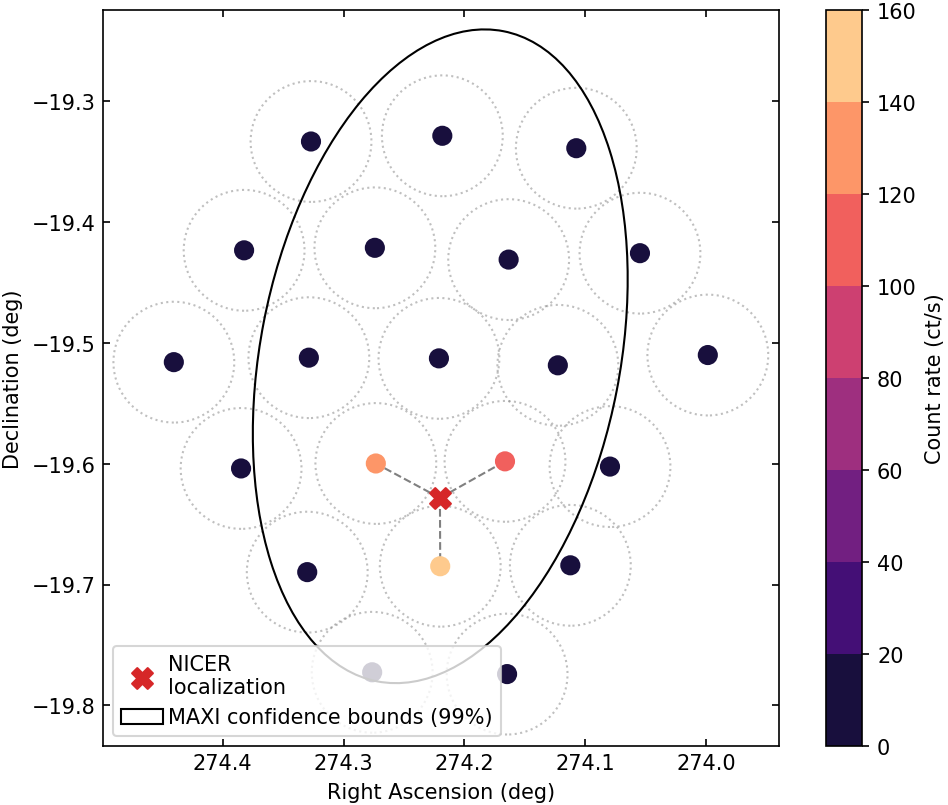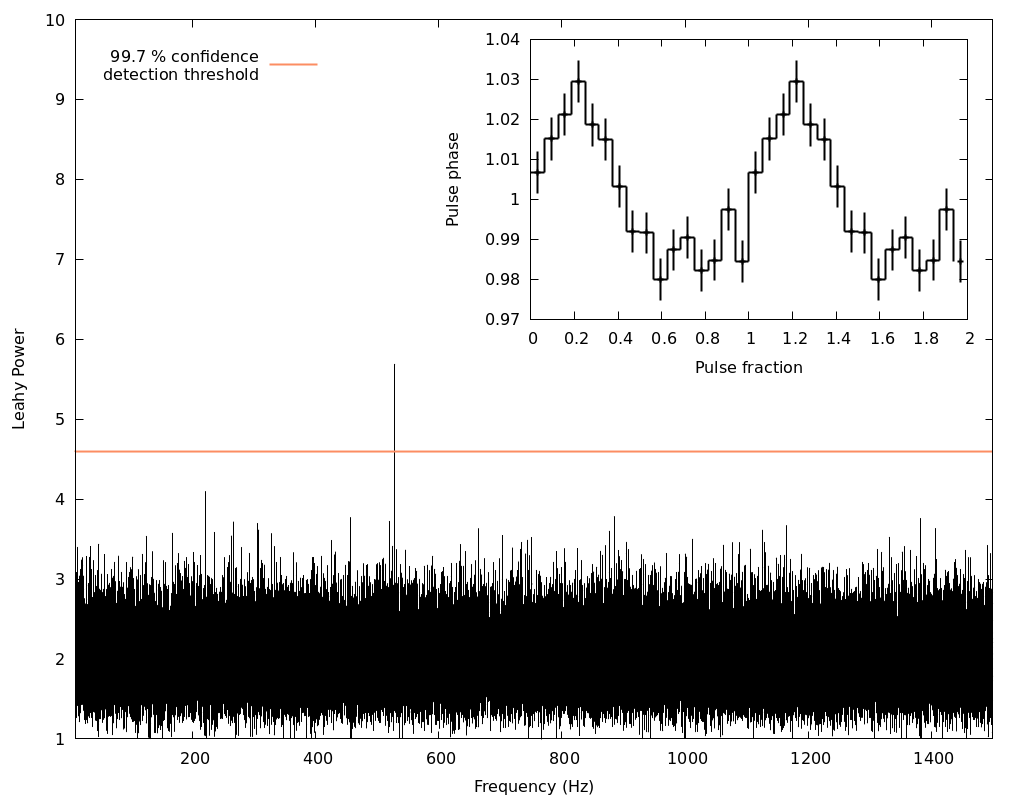NICER / ISS Science Nugget
for June 16, 2022
NICER discovers millisecond pulsations from the new transient MAXI J1816-195
On June 7th, JAXA's Monitor of All-sky X-ray Image (MAXI) payload discovered a new transient X-ray source, which was named MAXI J1816-195. The NICER team was quickly informed of this discovery through the OHMAN collaboration, and responded within 2 hours of the first detection. NICER initially scanned a region around the nominal coordinates reported by MAXI to localize the exact position of the source (Figure 1). Once the best source coordinates were determined, NICER began monitoring this new X-ray source using pointed observations. The NICER team quickly discovered that MAXI J1816-195 showed coherent X-ray pulsations at a period of 1.9 ms (Figure 2), and promptly reported it to the community on June 8th in Astronomer's Telegram #15425.
Since the discovery that MAXI J1816-195 is a new accreting millisecond pulsar, NICER has conducted a regular monitoring campaign of this object. We have already found that the apparent pulse frequency is oscillating sinusoidally with time, revealing the 4.8 hr binary orbit of this neutron star, as reported in ATel #15431. Further, we discovered that MAXI J1816-195 shows thermonuclear X-ray bursts, with three such events detected so far. The detailed analysis of these data by P. Bult (NASA GSFC) and collaborators is ongoing, and will continue while NICER conducts additional observations for the duration of this new target's outburst.


Figure: Left:
NICER raster scan around the nominal MAXI localization: 21 pointed observations lasting 60 sec each were carried out in a grid covering the full uncertainty region of the nominal MAXI coordinates. A bright X-ray source was clearly detected in this field, which,
by interpolation, could be localized to Right Ascension 274.2205 deg and Declination -19.627 deg.
Right: Power spectrum of the initial 2300 sec observation collected with NICER. The narrow peak rising well above the noise level is the 528 Hz (or 1.9 ms) pulse signal. After correcting for the orbital motion of the neutron star and folding the photon arrival times on this period we obtain the slightly asymmetrical pulsar waveform shown in the inset.
<< Previous
Main Index